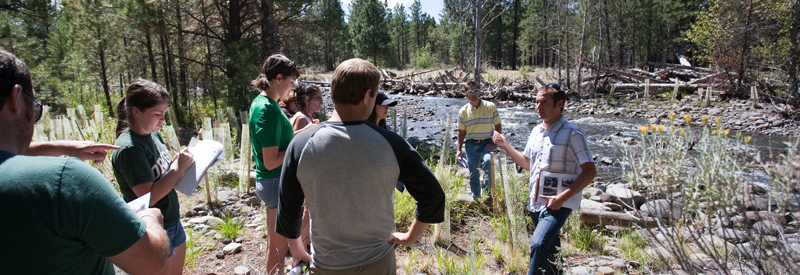
DESCHUTES PARTNERSHIP HISTORY
The four organizations of the Deschutes Partnership have been working together since the late 1990s. In these early days, the collaboration was loosely organized around individual projects and opportunities on a case by case basis. However, with the reintroduction of salmon and steelhead bringing new needs for restoration, the organizations began developing integrated strategies and coordinated workplans in 2005 and joint fundraising for major restoration projects by 2006.
With integrated strategies in place, the pace and scale of restoration began to accelerate as the efficiencies, leverage and collaboration began to materialize. The launch of the Bonneville Environmental Foundation’s Model Watershed program in Whychus Creek in 2006 established clear metrics and monitoring for success and The Deschutes Partnership began working in earnest to restore conditions for salmon and steelhead reintroduction.
In recognition of this integrated approach, the Oregon Watershed Enhancement Board (OWEB) invested in The Deschutes Partnership through their Focused Investment Program (FIP) in 2008. This established a dedicated funding program for on-the-ground restoration projects in the area so projects could more forward more efficiently and be more easily leverage with other funding sources. Since this time, other institutional investors, such as the Pelton Round Butte Fund, National Forest Foundation, Laird Norton Family Foundation and others, have invested in the restoration work of The Deschutes Partnership.
While the organizations work together under The Deschutes Partnership, each organization still operates as an individual 501(c)3 with an independent board of directors. The formalized structure of The Deschutes Partnership ensures a holistic and collaborative approach to the restoration efforts needed for the successful reintroduction of salmon and steelhead into the Upper Deschutes sub-basin.
To date, all of the programmatic accomplishments have been possible because the members of the Deschutes Partnership continue to work closely together on strategic planning, project planning, fundraising, outreach, media relations, staffing, implementation and evaluation. This time-intensive commitment to collaboration is absolutely critical for the success of the restoration efforts in the Metolius, Whychus Creek, and the Crooked River.
